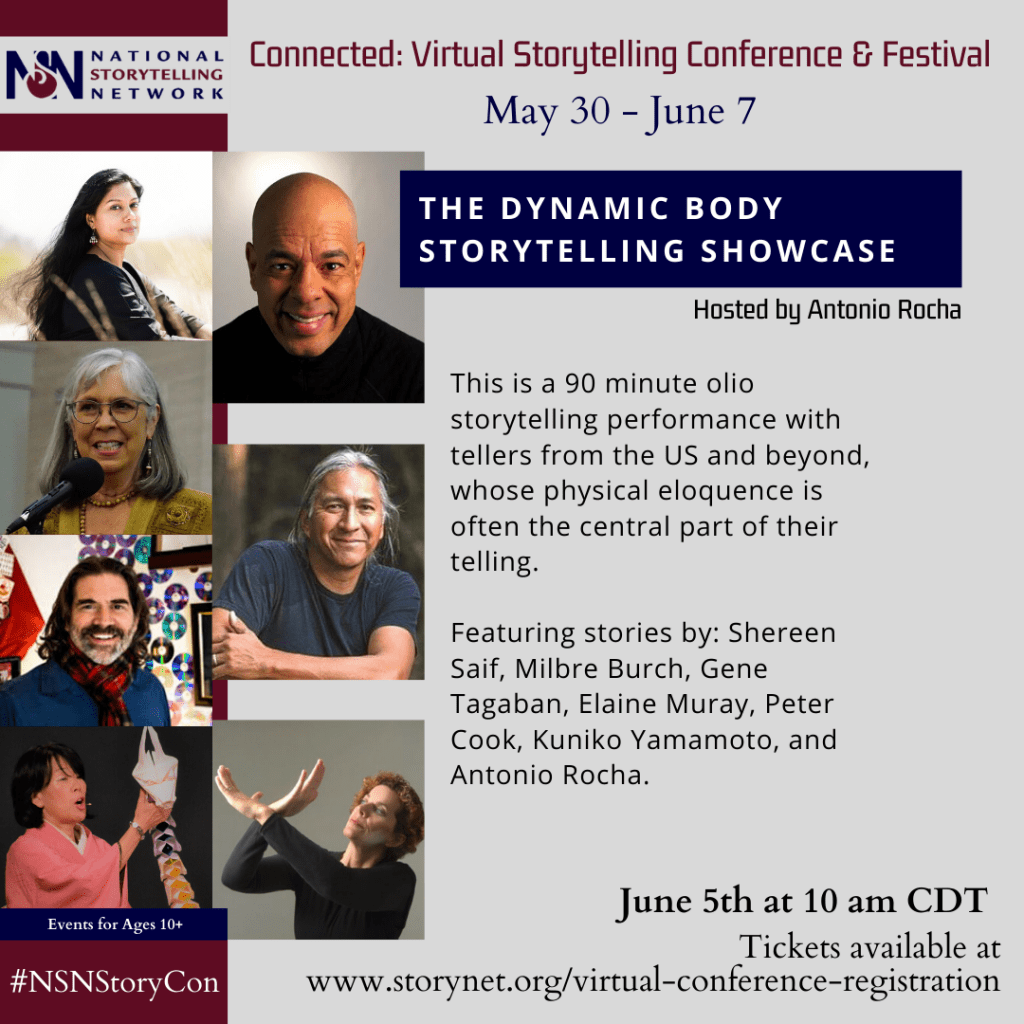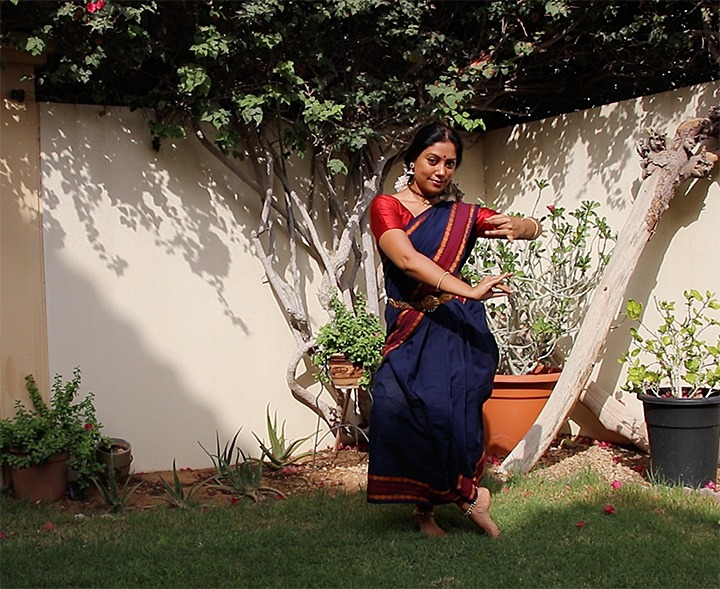What’s the fundamental difference between theatre and storytelling?
Some argue that if the telling has a lot of movement and acting then it becomes Theatre. But that in my opinion would be a very horse-with-blinkers-on way of looking at it. I strongly believe that if movement, mime, music, voice acting and other allied arts are part of your vocabulary and if it enhances the telling then by all means the storyteller should not shy away from using these tools.
Movement is integral to how I tell stories. And so it was a matter of great privilege when Storyteller, Teaching Artist and NSN Vice-Chair Katie Knutson invited me to be part of The Dynamic Body Storytelling Showcase at CONNECTED, the National Storytelling Network’s (NSN) first ever virtual Storytelling Conference & Festival, earlier this month.
This 90-minute performance, hosted by award-winning storyteller and mime artist Antonio Rocha, was a curated showcase of stories told with motion and emotion. Other than the honour of being part of the show, it was an unforgettable experience to watch some of the world’s finest tellers in action: GRAMMY-nominated spoken word recording artist and storyteller Milbre Burch, internationally renowned deaf performing artist Peter Cook, Origmai performer Kuniko Yamomoto and other greats like Gene Tagaban and Elaine Muray. Much to learn from them!

The Dynamic Body Storytelling Showcase | NSN Connected 2020
I picked a classic from Hindu mythology to share: A tale of how Ganesha outwits his brother Karthikeya in a race around the world. [Check out my YouTube video]
Let’s now come back to the question I asked in the beginning: What’s the fundamental difference between theatre and storytelling?
Antonio believes it lies in the exchange of energy: “In theatre, the energy between the actors is what feeds the energy coming in from the audience, which then feeds the energy between the actors. But in storytelling it is one line, between listener and teller.”
My view is an extension of this idea. The essential rule of storytelling is about cutting through the fourth wall to make a real connection with the audience: looking the audience in the eye, inviting them into the story, and sometimes even making them an active part of the story. As long this cardinal rule is followed, no matter how theatrical the telling may be, it stays within the realm of storytelling. At times it may even inhabit a third space where the borders between the two arts are blurred. Now that’s an exciting space to be!


Great article:)